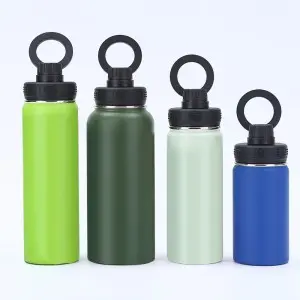We deal with many customers every year, and among these customers there are veterans and newcomers to the industry. I think the most troublesome thing when dealing with these people is that both veterans and newcomers have their own way of understanding production costs. Some of these customers are currently happy to achieve bargaining through cost analysis, which is understandable from the customer’s perspective. There is nothing wrong with communicating with manufacturers through professional knowledge and business skills to achieve the purpose of reducing procurement costs. But what bothers me is that some customers will communicate through their own cognition when they don’t know much about the production process. It’s the most troublesome when they can’t understand it no matter how they explain it.
For example, in today’s title, if the production process is exactly the same, but the size and capacity are different, is it true that the two water cups are just slightly different in material cost?
This problem is divided into two situations for everyone to explain (perhaps this article will not attract as much attention as other water cup articles that are closely related to life, but in order to help professional purchasers solve their doubts, I think it is necessary to write it specifically.) , one situation is: the production process is the same, the capacity is different, but the capacity is not much different. For example, compare the production costs of a 400 ml stainless steel thermos cup and a 500 ml stainless steel thermos cup. There is not much difference between 400ml and 500ml. There is not much difference in production efficiency and production loss, and there is not much difference in labor time. Therefore, the cost between them can be regarded as the only difference in material cost.
However, assuming the production process is the same, and two water cups of the same structure, one is 150 ml and the other is 1500 ml, the production cost between them can be calculated based on the difference in material cost. First of all, the losses are different. Small water cups are easier to produce than large-capacity water cups. It takes less time to produce a single product and the yield rate of each production step is higher. It would obviously be unscientific if the cost is calculated based on the weight of the material. For factories, the calculation of working hours is also an important part of the product production cost.
We will explain each production process to you. Laser welding, the welding of the mouth of a 150 ml water cup takes about 5 seconds to complete, while the 1500 ml cup takes about 15 seconds to complete. It takes about 3 seconds to cut the mouth of a 150 ml water cup, while it takes about 8 seconds to cut the mouth of a 1500 ml water cup. From these two processes, we can see that the production time of the 1500 ml water cup is more than twice the production time of the 150 ml water cup. A stainless steel thermos cup needs to go through more than 20 processes from drawing the tube to the final product. Some water cups with complex structures require more than 40 production processes. On the one hand, the production time is also due to the increasing difficulty of large-scale production of products. The loss of each process will also incre
Therefore, if the production cost of a 400 ml stainless steel thermos cup and a 500 ml stainless steel thermos cup only differ by 1 yuan, then the production cost of a 150 ml thermos cup and a 1500 ml thermos cup will differ by more than 20 yuan.
Post time: Feb-02-2024

